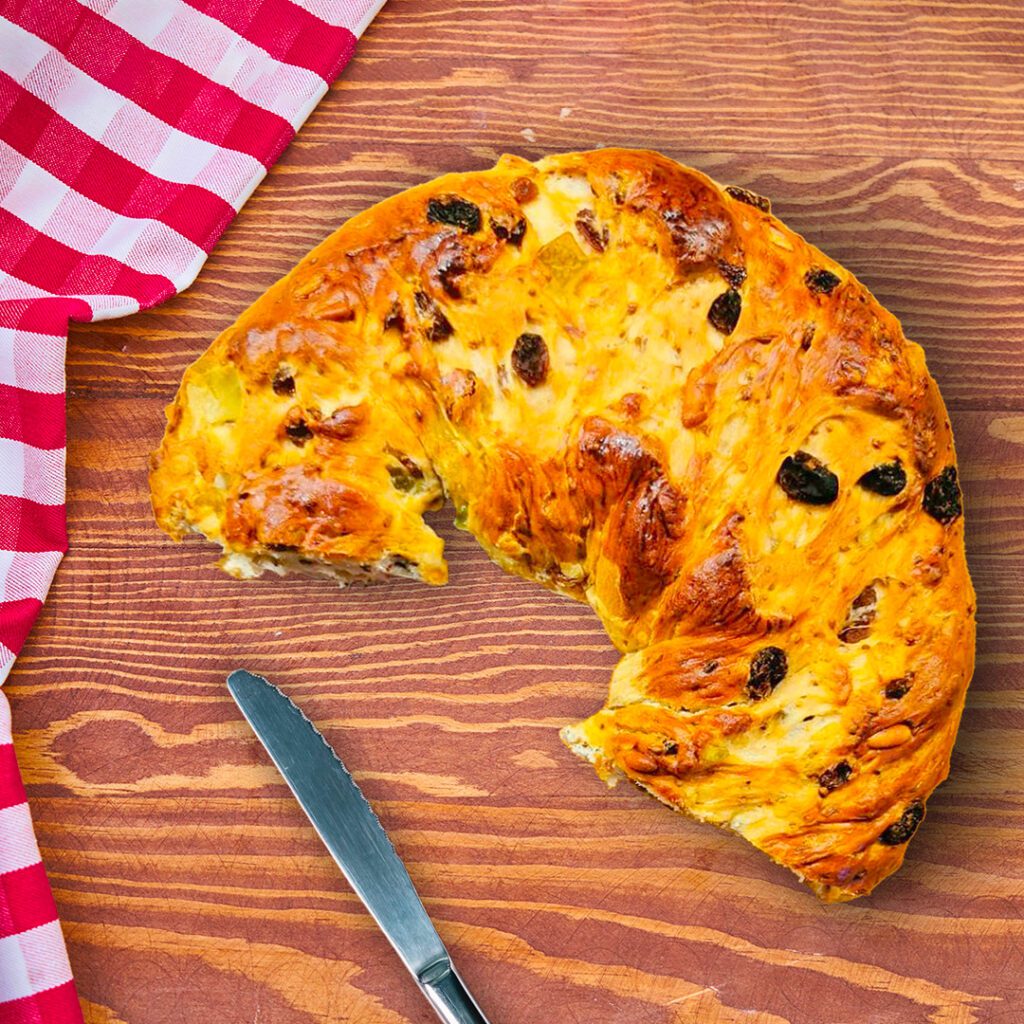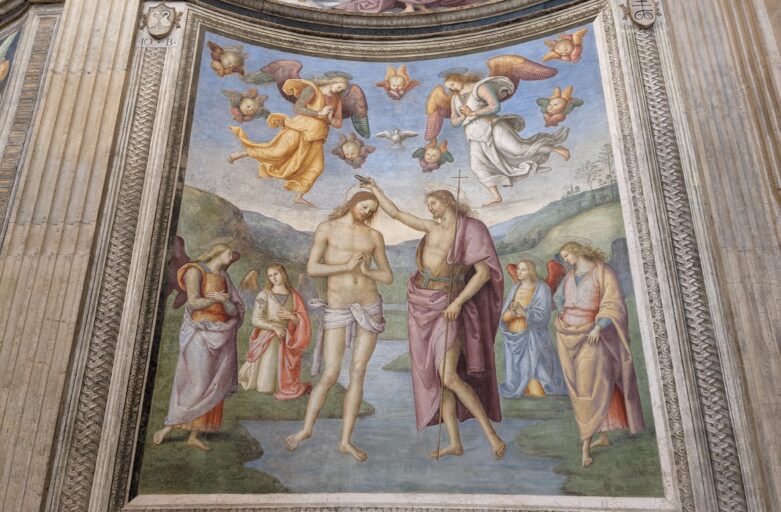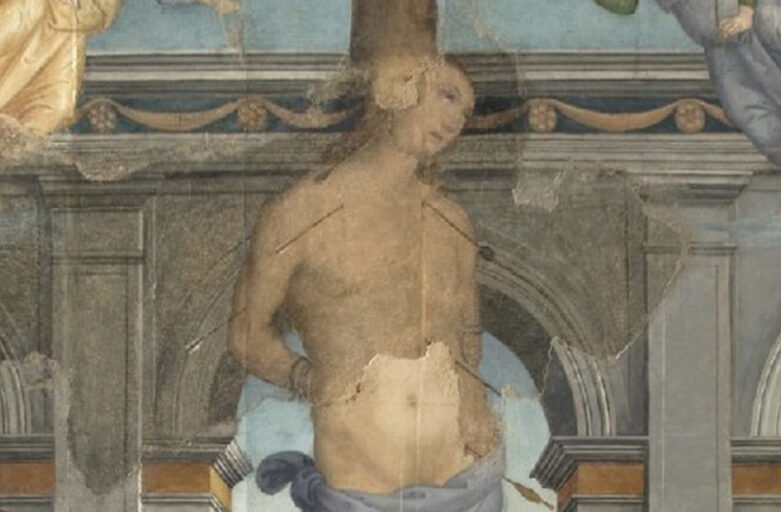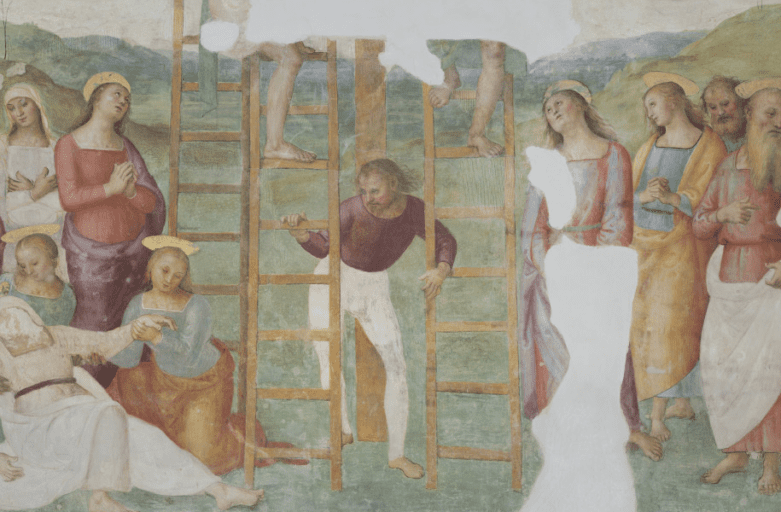The torcolo of Saint Constantius is a typical cake from Perugia, prepared for the celebration of this Saint that takes place every year on 29 January. Saint Constantius was the first bishop of Perugia and, together with Saint Lawrence and Saint Herculanus, is one of the three patron saints of the city.
Saint Constantius and the persecution of Christians
During the reign of Emperor Marcus Aurelius (II century), Constantius was persecuted because he professed the Christian faith. Flagellated and immersed in boiling water in the calidarium of the Roman baths, Constantius miraculously survived. He was later imprisoned, where he managed to convert the guards to the Catholic religion and convinced them to release him. Captured a second time and forced to walk on hot coals, he emerges unharmed. Freed and arrested a third and final time, he was taken to Foligno and beheaded on 29 January 170. After the martyrdom, the body of the Saint was taken to Perugia and buried not far from the city in a place called Areola fuori Porta San Pietro. In 1205, the bishop of Perugia, Viviano, had the first church dedicated to Saint Constantius built nearby the tomb, as indicated by the inscription on the altar.
Saint Constantius and the city of Perugia
The popularity of this Saint in Perugia is linked to the miracles he performed on a woman suffering from blindness and a nobleman with paralysed lower limbs, both cured by his intercession. The day dedicated to the patron saint is 29 January. However, celebrations in the city already start a few days earlier with a procession from the streets of the city centre to the church dedicated to the Saint and other events of various kinds. It is on these feast days that the citizens of Perugia eat the traditional torcolo.

Torcolo of Saint Constantius
Torcolo is a traditional Perugian cake in the shape of a doughnut with a hole in the centre. There are various legends about its shape: it is said that the hole in the torcolo represents the decapitated neck of Saint Constantius, or it represents the necklace that slipped off the neck of the Saint when he was decapitated. Others claim that it has this shape because the central hole makes it easier to transport it during fairs and markets.
Torcolo is still prepared today following the traditional recipe. To make the dough, mix 600 g of flour with 25 g of brewer's yeast dissolved in a glass of warm water; add 180 g of sugar, 150 g of candied citron pieces, 150 g of raisin, 180 g of pine nuts and 30 g of aniseed. Mix all ingredients with 30 g of olive oil and 80 g of butter. Put the dough in a doughnut mould with a hole in the middle and leave li to rise for about half an hour. Finally, brush the surface with egg yolk, carve the surface and bake for 45 minutes at 180 °C.
The legend says that unmarried girls go to the Church of Saint Constantius on the day of his celebration to find out if they will get married within the year. A play of light reflected on the statue of the Saint gives the impression that he is winking. If Saint Constantius winks at the girl, it means she will get married; if not, her fiancé will offer her the typical torcolo as a token of consolation.
Scopri le testimonianze del Perugino oggi
Percorsi e itinerari alla scoperta delle opere del divin pittore









